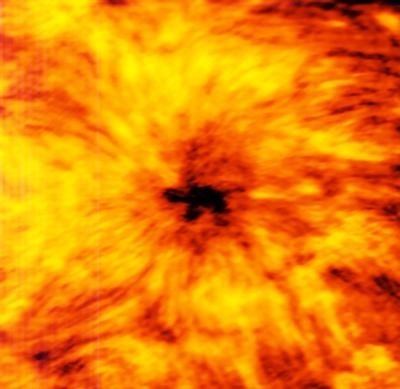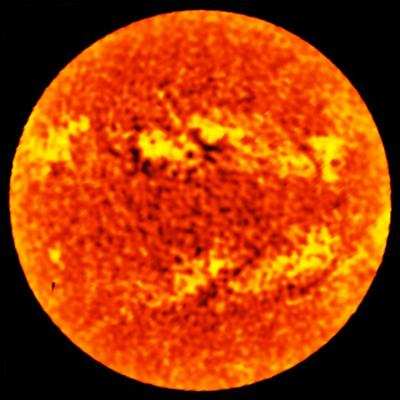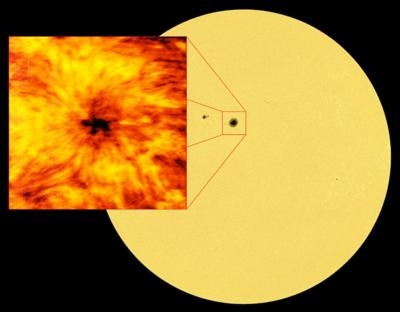New Images Captured By ESO Telescope In Chile
New images taken with the Atacama Large Millimeter/submillimeter Array (ALMA) in Chile have revealed otherwise invisible details of our Sun, including a new view of the dark, contorted center of a sunspot that is nearly twice the diameter of the Earth. The images are the first ever made of the Sun with a facility where ESO is a partner. The results are an important expansion of the range of observations that can be used to probe the physics of our nearest star. The ALMA antennas had been carefully designed so they could image the Sun without being damaged by the intense heat of the focussed light.

Astronomers have harnessed ALMA's capabilities to image the millimetre-wavelength light emitted by the Sun’s chromosphere — the region that lies just above the photosphere, which forms the visible surface of the Sun. The solar campaign team, an international group of astronomers with members from Europe, North America and East Asia, produced the images as a demonstration of ALMA’s ability to study solar activity at longer wavelengths of light than are typically available to solar observatories on Earth.
Astronomers have studied the Sun and probed its dynamic surface and energetic atmosphere in many ways through the centuries. But, to achieve a fuller understanding, astronomers need to study it across the entire electromagnetic spectrum, including the millimetre and submillimetre portion that ALMA can observe.
Since the Sun is many billions of times brighter than the faint objects ALMA typically observes, the ALMA antennas were specially designed to allow them to image the Sun in exquisite detail using the technique of radio interferometry — and avoid damage from the intense heat of the focussed sunlight. The result of this work is a series of images that demonstrate ALMA’s unique vision and ability to study our Sun.The data from the solar observing campaign are being released this week to the worldwide astronomical community for further study and analysis.

The team observed an enormous sunspot at wavelengths of 1.25 millimetres and 3 millimetres using two of ALMA's receiver bands. The images reveal differences in temperature between parts of the Sun's chromosphere. Understanding the heating and dynamics of the chromosphere are key areas of research that will be addressed in the future using ALMA.
Sunspots are transient features that occur in regions where the Sun's magnetic field is extremely concentrated and powerful. They are lower in temperature than the surrounding regions, which is why they appear relatively dark.
The difference in appearance between the two images is due to the different wavelengths of emitted light being observed. Observations at shorter wavelengths are able to probe deeper into the Sun, meaning the 1.25 millimetre images show a layer of the chromosphere that is deeper, and therefore closer to the photosphere, than those made at a wavelength of 3 millimetres.
ALMA is the first facility where ESO is a partner that allows astronomers to study the nearest star, our own Sun. All other existing and past ESO facilities need to be protected from the intense solar radiation to avoid damage. The new ALMA capabilities will expand the ESO community to include solar astronomers.
(Images provided with ESO news release)

 ANN's Daily Aero-Term (05.29.25): Terminal Radar Service Area
ANN's Daily Aero-Term (05.29.25): Terminal Radar Service Area ANN's Daily Aero-Term (05.30.25): Very High Frequency (VHF)
ANN's Daily Aero-Term (05.30.25): Very High Frequency (VHF) Aero-News: Quote of the Day (05.30.25)
Aero-News: Quote of the Day (05.30.25) Airborne 05.23.25: Global 8000, Qatar B747 Accepted, Aviation Merit Badge
Airborne 05.23.25: Global 8000, Qatar B747 Accepted, Aviation Merit Badge ANN's Daily Aero-Linx (05.30.25)
ANN's Daily Aero-Linx (05.30.25)





